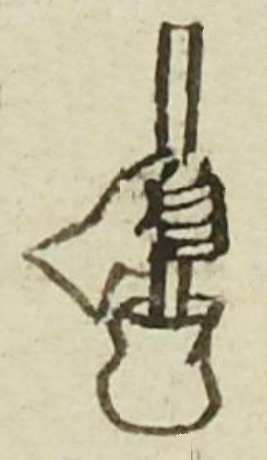Aocnel (MH623r)
This black-line drawing of the simplex glyph for the personal name Aocnel (perhaps "Good for Nothing," attested here as a man's name) appears to feature a mortar and pestle for pulverizing or mixing a concoction (providing the phonetic indication for the -nel part of the name). The visual leans toward Tlanenel (a personal name having to do with mixing).
Stephanie Wood
The Aoc- part of the name is not shown visually. Aoc (an adverb) means no longer. Nel was originally short for nelli (an adjective), true, but James Lockhart explains that it became ubiquitous in particle combinations, losing the meaning of "true." See Lockhart's explanation in our Online Nahuatl Dictionary entry for canel.
Another Aocnel personal name glyph in this collection (see below) has a completely different motif (a plant). Perhaps it is a medicinal plant.
Orozco y Berra suggests a translation of "bueno para nada," good for nothing. See our Dictionary entry.
Stephanie Wood
andres
aocnel
Andrés Aocnel
Stephanie Wood
1560
Jeff Haskett-Wood
medicinas, plantas medicinales, nombres de hombres

aoc, no longer, https://nahuatl.wired-humanities.org/content/aoc
nel(li), true, https://nahuatl.wired-humanities.org/content/nelli
aocnel, null, good for nothing, https://nahuatl.wired-humanities.org/content/aocnel
Bueno Para Nada
Stephanie Wood
Matrícula de Huexotzinco, folio 623r, World Digital Library, https://www.loc.gov/resource/gdcwdl.wdl_15282/?sp=328st=image.
This manuscript is hosted by the Library of Congress and the World Digital Library; used here with the Creative Commons, “Attribution-NonCommercial-ShareAlike 3.0 License” (CC-BY-NC-SAq 3.0).







